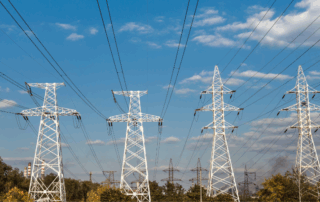5 Ways to Reduce Capacity Tags and Combat PJM Rate Increases
With PJM’s 2025/2026 capacity rates surging to decade highs, reducing your facility’s capacity tags has never been more critical for controlling electricity costs. By understanding how tags are calculated and taking strategic action during peak summer hours, businesses can significantly lower future capacity charges and protect their bottom line.
What PJM’s Capacity Cap And Collar Means For 2026-2028
FERC’s approval of a capacity price cap and collar for PJM’s 2026/27 and 2027/28 delivery years sets new upper and lower bounds for auction clearing prices, aiming to curb volatility while preserving investment signals. For energy brokers, large consumers, and generation developers, this temporary measure reshapes procurement strategies and budget planning in one of the nation’s most critical power markets.
Texas Senate Bill 6 (SB6): Impact on Energy Sector
Texas Senate Bill 6 (SB6) marks a significant overhaul of ERCOT’s rules, introducing new oversight for large load interconnections, backup power requirements, and behind-the-meter systems. For energy customers, understanding these changes is critical to managing costs in Texas’s evolving energy landscape.
Stranded Costs: Understanding Their Impact on Energy Deregulation
Stranded costs are a hidden but significant factor in the shift from regulated to deregulated energy markets, impacting both utilities and end users. For businesses and brokers, understanding how these unrecovered investments are charged to ratepayers is essential to making informed procurement and budgeting decisions in competitive markets.
Advanced Energy Storage Technologies: Powering The Future Of The Grid
Advanced energy storage technologies are reshaping the way businesses and grid operators manage electricity, offering new tools to store, dispatch, and optimize clean energy. As grid demand rises and renewable generation expands, these systems are becoming essential for improving reliability, cutting costs, and supporting the transition to a more resilient energy future.
Solar PPAs vs. Renewable Energy Supply: Which Is Better For Businesses Looking To Go Green?
Businesses exploring clean energy have two main options: solar power purchase agreements (PPAs) or renewable energy supply contracts. Each has unique costs, benefits, and sustainability impacts. Understanding how these strategies differ is essential for choosing the path that best aligns with your organization’s energy, financial, and renewable goals.





